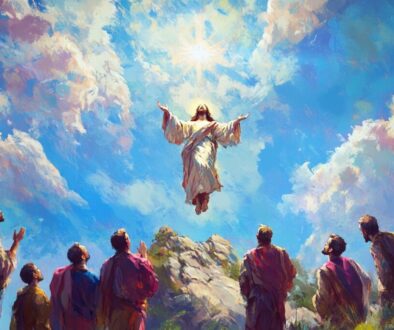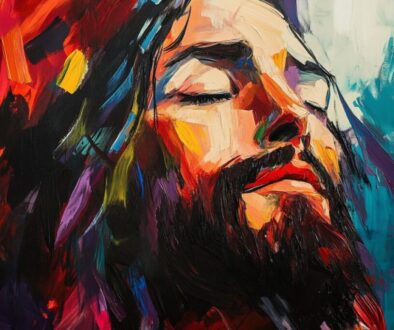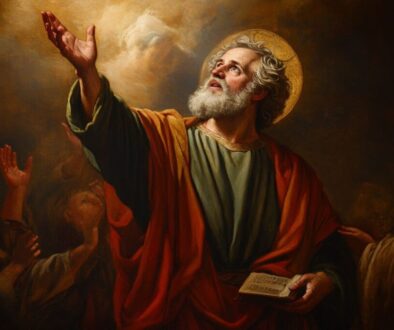2nd Sunday of Lent 2022 – Sermon by Father Levine

Fr. Joseph Levine; Holy Family Catholic Church, Burns, Oregon, and Missions; March 13, 2022
Last Sunday I am given to understand that the Bishop had a few words to say about ‘unity’. Unity
requires that we be walking on the same road to the same destination. If we are on different roads or
headed in different directions, there can be no unity.
Well, what is the road? What is the destination? Jesus tells us, I am the way, the truth, and the life. No
one comes to the Father but by me. (Jn 14:6) There you have the most basic and succinct requirement of
Christian unity. We must all be walking in the way that is Jesus Christ, following the truth that comes
from him, sharing in his life, the life of grace in the Holy Spirit, so as to arrive at eternal life in the
Father’s house. We must all be walking in that way and supporting each other in that way, helping each
other to reach that supreme goal, a goal that none of us can take for granted.
That leaves each one of us with a choice highlighted in today’s 2nd reading. We can turn away from the
promise of eternal life, we turn away from the way of the Cross, we can turn away from the path of true
unity and peace, we can become enemies of the Cross – a sad reality that should bring us to tears as it
brought St. Paul to tears – we can glorify a worldly way of life, which will end in shame. Or we can
embrace the way of the Cross and the promise of eternal life and live as citizens of heaven.
If we turn to today’s 1st reading, we heard that Abraham believed God and it was credited to him as an
act of righteousness. This is one of the key passages of the Old Testament that was taken up by St. Paul
when he wrote to the Romans and to the Galatians about the righteousness, or the justice before God,
that comes from faith. (cf. Rm 4:3; Gal 3:6) The teaching of the Council of Trent and the Catechism of the
Catholic Church refer to this as the ‘grace of justification’ which begins in us in baptism, which not only
involves the forgiveness of sins, but also makes us to share God’s life and nature as the true children of
God. (cf. CCC 1987-1995)
Let us consider a bit more God’s words to Abraham and Abraham’s response of faith. Abraham was old
and his wife, Sarah, was well beyond the age of childbearing. God promises to Abraham that his
descendants would be as numerous as the stars of the sky. God promised something that was
impossible both to human power and the power of nature. Abraham put his trust in God’s promise and
was ready to act upon it, governing his life by God’s promise, received in faith.
Many centuries later, a daughter of Abraham, the Blessed Virgin Mary, received a promise of God from
the Angel Gabriel. You shall conceive and bear a Son and you shall call his name, Jesus … the Holy Spirit
will come upon you, and the power of the Most High will overshadow you; therefore the child to be born
will be called holy, the Son of God. (Lk 1:35) More than Abraham, Mary believed the promise of God and
let her whole life be shaped by the promise, living out her response to the angel’s words, Behold, the
handmaid of the Lord, let it be done to me according to your word. (Lk 1:38) Every time we pray “Hail
Mary, full of grace” we should in some way recall this key moment in salvation history that began with
the angel’s greeting.
We too have received the promise of God in Jesus Christ. It comes to us in many forms. Let me cite just
two of them: I am the bread of life; he who comes to me shall never hunger and he who believes in me shall never thirst … He who eats me flesh and drinks my blood has eternal life and I will raise him up on
the last day. (Jn 6:35,54). And, I am the resurrection and the life; he who believes in me though he die,
yet shall live, and whoever lives and believes in me shall never die. (Jn 11:25)
We see here two aspects of this promise, eternal life, which ultimately consists in the vision of God, and
the resurrection of the body. We see both of these aspects also revealed in today’s Gospel, in the
Transfiguration of Jesus Christ.
When the chosen Apostles beheld the radiance of God’s glory shining through Jesus’ transfigured body,
when Peter declared, Lord, it is good that we are here, there is a sort of anticipation of the vision of the
face of God that constitutes the blessedness of the angels and saints in heaven. At the same time,
because that glory is streaming through Christ’s human body, there is revealed the glorification of our
own body that will take place in the resurrection. He will change our lowly body to conform with his
glorified body by the power that enables him also to bring all things into subjection to himself.
I am the way, the truth, and the life. On the mount of Transfiguration, the goal of our life’s journey is
revealed to us. This is something beyond all human power and all the power of created nature. This is
something that we can attain only by the help of God’s grace. This is a path that must begin in faith. We
must believe in God’s promise and shape our entire life in accord with it.
On the same mountain, the way to the goal is also revealed, in two ways.
Jesus speaks with Moses and Elijah about his “exodus” that he is going to accomplish in Jerusalem. The
word “exodus’ means “departure”, “going out”. Jesus’ “exodus” or “departure” is his death and
resurrection through which he passes from this world to the Father. (cf. Jn 13:1) The use of the word
“exodus” teaches us the meaning of Jesus suffering, death, and resurrection by connecting it with the
great event in the history of Israel, the “exodus” of Israel from Egypt. God sent Moses to free them from
slavery in Egypt, to lead them out across the Red Sea to the mountain of God, where they entered into a
covenant with him and learned to worship him. This constituted the beginning of their journey to the
promised land. Through the “exodus” of his Cross, Jesus leads us out of slavery to sin and death,
inaugurates us into the new and eternal covenant in his Blood, into which we entered each personally
through baptism, and gives us the worship in spirit and truth, the Holy Sacrifice of the Mass. This is the
beginning of our journey to eternal life.
The same message, the way of the Cross, as the way of the new exodus, is taught also in the words of
the Father, This is my chosen Son; listen to him.
A week before the Transfiguration, Jesus had for the first time prophesied to his Apostles his own
suffering, death, and resurrection. Then he called his disciples to deny themselves, take up their cross
and follow him. (cf. Lk 9:22-23) Listen to him: deny yourself; take up your cross; follow him on the new
exodus to eternal life. All the discipline of Lent, all the works of prayer, fasting, and works of mercy, should awaken in us the desire and determination to follow Jesus on this new exodus. Let us walk this Lenten journey together, supporting each other upon the way.
Taking up the Lenten theme proposed by our Bishop we can see that here Jesus “breaks himself into our
brokenness”. By taking upon himself the weakness of mortal nature, Jesus, the Son of God, takes into himself all the brokenness of our life wounded by sin and pours into those who follow him, who offer to
him their brokenness, the brokenness of their humble and contrite heart, the healing balm of his grace
and mercy. By breaking himself into our brokenness, our very brokenness becomes for us the way to the
fulfilment of the promise, the way to salvation, the way to eternal life, the way to God.
(Related: Ash Wednesday 2022 – Sermon by Father Levine)
Seek a Deeper Connection with God and Join Lay Cistercians of South Florida
Lay Cistercians of South Florida, is a community of lay people who seeks to have a deeper connection with God by living a life inspired by the monks and nuns through Lay Monasticism. Learn more about what is a Lay Cistercian on our website. Anyone who aspires to do the same as us, and is a confirmed Catholic is welcome to join us! We meet every second Saturday of the month at Emmanuel Catholic Church in Delray Beach, Florida.

This Content Has Been Reviewed For Accuracy
This content has undergone comprehensive fact-checking by our dedicated team of experts. Discover additional information about the rigorous editorial standards we adhere to on our website.



